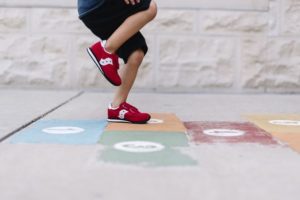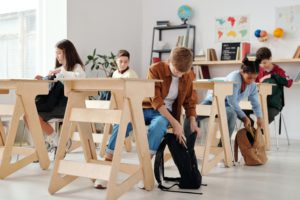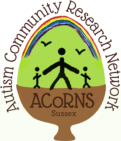In this month’s reading group, we had a great discussion about the support for students in schools and the latest National Autistic Society 2021 School Report. The report gives recommendations of how schools might provide better support for autistic students.
We provided some advance discussion questions to think about:
- Do you agree with these recommendations, and do you foresee any problems with them?
- How would you improve teacher training?
- How can we improve peer education to promote inclusivity?
- How can we improve transitions post-pandemic?
More focus on strengths
We started the discussion talking about how shocking some of the statistics presented in the above report are. For Example, “74% of parents said their child’s school did not fully meet their needs – this has almost doubled since 2017” (NAS, 2021) and “Less than half of autistic children are happy in school” (NAS, 2021). We all felt strongly that so much more needs to be done to ensure every school is an inclusive environment for all children and young people to learn. However, one member of the group also raised how we need to have a much bigger focus on the strengths. We discussed how the report lacked information on what was going well. For example, what is going well for the 26% of parents that said their school did meet their child’s needs? We agreed this information is just as important as we can use what is going well and do more of it.
Teacher Training
The report stressed the need for more autism-specific training for teachers. One person gave a good example from the University of Sussex where trainee teachers are given the option to carry out a 4-week placement in a special school. This is a great opportunity to see the support for autistic students ‘under the microscope’ and then be able to apply this in mainstream schools. Once teachers are qualified, there is little time for such in-depth experience, so it is a great idea to embed it into initial-teacher training. We also discussed how some people view teachers in special schools as having special skills etc. However, there is no specific PGCE route for special needs training: many teachers learn from experience and workplace training, while a few can now undertake training in a special school on the School Direct training route. We need to ensure that these opportunities are given to all teachers in all schools. There is so much to fit into initial teacher training that material on special needs and autism specifically may be very brief. Given that there are currently 163,041 autistic students in schools, 70% of them in mainstream education (DofE, 2021), there really needs to be more focus on this in initial training.
from the University of Sussex where trainee teachers are given the option to carry out a 4-week placement in a special school. This is a great opportunity to see the support for autistic students ‘under the microscope’ and then be able to apply this in mainstream schools. Once teachers are qualified, there is little time for such in-depth experience, so it is a great idea to embed it into initial-teacher training. We also discussed how some people view teachers in special schools as having special skills etc. However, there is no specific PGCE route for special needs training: many teachers learn from experience and workplace training, while a few can now undertake training in a special school on the School Direct training route. We need to ensure that these opportunities are given to all teachers in all schools. There is so much to fit into initial teacher training that material on special needs and autism specifically may be very brief. Given that there are currently 163,041 autistic students in schools, 70% of them in mainstream education (DofE, 2021), there really needs to be more focus on this in initial training.
We talked about how teachers should be supported to plan for their lessons to be inclusive and accessible for everyone. This would mean that they don’t need to worry about adapting it for specific pupils.
The personal experience of group members was that the best type of training for school staff is that delivered by autistic students and/or their families. Where training has been delivered by external non-autistic providers, the  impact can be low. There is a great opportunity to include young people, such as youth ambassadors from autism charities using methods such as digital stories. A good example is training by the Autism Education Trust. One person mentioned how important it is to ensure such training is open not just to teachers but to all school staff, including those who run after-school clubs. They reflected on an experience where the leader of a club wore very strong perfume: some autistic children found this overwhelming, but the leader did not realise.
impact can be low. There is a great opportunity to include young people, such as youth ambassadors from autism charities using methods such as digital stories. A good example is training by the Autism Education Trust. One person mentioned how important it is to ensure such training is open not just to teachers but to all school staff, including those who run after-school clubs. They reflected on an experience where the leader of a club wore very strong perfume: some autistic children found this overwhelming, but the leader did not realise.
In local practice, the ‘Autism Aware Award’ is run by West Sussex County Council. Schools can work towards bronze, silver and gold awards. Schools in the scheme are evaluated every three years, providing goals for the schools to meet. Nationally, the National Autistic Society (NAS) runs the autism inclusion award. These awards and goals help schools reflect continually to develop and maintain autism-friendly environments.
Whole-School Approach
 The report raised how important a whole-school approach is to make schools accessible for autistic students. We discussed how from experience there is often not enough education for students about the inclusion of those with different needs. PSHE lessons would be a great opportunity to teach children about inclusion. Just like teacher training, this is a great opportunity to have lessons delivered by autistic people.
The report raised how important a whole-school approach is to make schools accessible for autistic students. We discussed how from experience there is often not enough education for students about the inclusion of those with different needs. PSHE lessons would be a great opportunity to teach children about inclusion. Just like teacher training, this is a great opportunity to have lessons delivered by autistic people.
EHCPs
The report raised issues surrounding Education, Health and Care Plans (EHCPs): the document all children with significant additional needs should have to define the support they need. We felt that in an ideal world, only a few students should need such a plan, if all schools were already providing good support and an inclusive environment. One person wanted to see all schools being inclusive, with only minimal need for special school provision. We spoke about the conflicts here: these schools are often amazing for the child, but can be many miles from home. This can mean the young person tends not to be included in their local community and misses out on local friends and neighbourhood experiences. That means having the right services in every area. Schools also need to ensure support is consistent: one person noted this as a failing at her child’s school.
We thought more dedicated resources are needed in all schools, not just special ones. Mainstream schools should have better connections with services such as occupational therapy and speech and language therapy. Sensory rooms in mainstream school could benefit everyone in the school. A good local example is the Just Right programme used through Brighton & Hove schools: because everyone uses it, there is a common language and understanding for all staff and pupils, autistic and non-autistic.
Reforms in 2014 promised better links between education, health and social care, but people who work in the field felt that little has actually changed. They likened it to being more of an ‘E plan’ given the lack of health and care input, especially as, at tribunals to appeal EHCPs, only education is held accountable.
Physical School Environment
We discussed low-cost and effective ways for all schools to be more physically accessible, without rebuilding the entire school. This might include creating quiet areas, having plain, uncluttered spaces around whiteboards and adding sensory boxes (e.g., with ear defenders in). Making these accessible to everyone would also help students who are not formally diagnosed but still need support. All schools need to understand how the effects of sensory overload are not ‘bad behaviour’ or ‘being unable to sit still’. Some reasonable adjustments are costlier, such as adapted laptops. Other pupils may want, but not need, such devices: we felt this could be a good opportunity to teach students the true meaning of equality – it doesn’t mean everyone has the same.
entire school. This might include creating quiet areas, having plain, uncluttered spaces around whiteboards and adding sensory boxes (e.g., with ear defenders in). Making these accessible to everyone would also help students who are not formally diagnosed but still need support. All schools need to understand how the effects of sensory overload are not ‘bad behaviour’ or ‘being unable to sit still’. Some reasonable adjustments are costlier, such as adapted laptops. Other pupils may want, but not need, such devices: we felt this could be a good opportunity to teach students the true meaning of equality – it doesn’t mean everyone has the same.
Schools might find conflict between ideas for support and government guidance. One school was given the suggestion of allowing a student to work at a standing desk or sitting on a ball, but felt constrained by policy advice that the students should spend time sitting down writing at a desk.
New schools should be built to be inclusive and accessible for all. This could include features such as noise-absorbing panels in the main hall, curved walls, muted colour and with consideration of where support units are placed within the school.
The ChatLab at the University of Sussex has previously collaborated with St Antony’s School, Chichester, on playground designs for autistic pupils. The playground was designed by their lead teacher to incorporate an appropriate level of physical challenge, support for imaginative play, structured movements and observation points. They found that this new design led to higher levels of group play, and social initiation. Findings suggested that the playground design helped provide both the right amount of structure and challenge to support this. This is a really interesting example of ways we can adapt the physical space to support autistic children.
playground designs for autistic pupils. The playground was designed by their lead teacher to incorporate an appropriate level of physical challenge, support for imaginative play, structured movements and observation points. They found that this new design led to higher levels of group play, and social initiation. Findings suggested that the playground design helped provide both the right amount of structure and challenge to support this. This is a really interesting example of ways we can adapt the physical space to support autistic children.
The effects of COVID-19
The report highlighted the importance of managing transitions, especially after COVID. Methods such as digital tours and videos of schools to welcome children back into these settings can work really well. A great example is Autek who create 360-degree video tours. The ‘Our Stories’ project in the ChatLab is currently working with them. We felt it was so important to prepare students not only for changes during COVID but also as rules change. Some pupils have never experienced school pre-COVID so don’t know what a ‘business-as-usual’ school is like, so we must make sure we support this transition. We discussed how to apply these ideas to the transition between primary and secondary school, for example by including Year 7 pupils as buddies or mentors. One parent’s experience was that this can be valuable for all involved, including the Year 7s, as they really took ownership of their senior supporting role.
 We believed there needs to be time for reflection: what went well during the pandemic and how can positives be brought back into the classroom? An important Covid-19 and autism survey by Dr Jacqui Shepherd, co-director of ACoRNs found that for some autistic pupils, online learning was a more inclusive and less overwhelming experience than in-school learning: they were able to take part in all lessons. Many young people learnt a lot beyond the narrow subject curriculum during Covid-19, such as greater independence. There is a constant battle in schools between time devoted to life/social skills vs. the subject curriculum. Lockdown was a great opportunity for many young people to work on skills that have less focused time in school.
We believed there needs to be time for reflection: what went well during the pandemic and how can positives be brought back into the classroom? An important Covid-19 and autism survey by Dr Jacqui Shepherd, co-director of ACoRNs found that for some autistic pupils, online learning was a more inclusive and less overwhelming experience than in-school learning: they were able to take part in all lessons. Many young people learnt a lot beyond the narrow subject curriculum during Covid-19, such as greater independence. There is a constant battle in schools between time devoted to life/social skills vs. the subject curriculum. Lockdown was a great opportunity for many young people to work on skills that have less focused time in school.
During Covid-19 changes people spoke of ‘home-schooling’ and ‘catching up’. However, learning online during restrictions was not the same as traditional home-schooling: everyone was trying their best but with few resources and sometimes no technology. The need to ‘catch-up’ is very pressurising on both pupils and teachers. Everyone missed out on learning, but each individual needs a tailored approach. It’s not as simple as just expecting catch-up to the pre-Covid-19 expectations.
Autism In Schools Project
 A group member involved in the new ‘autism in schools’ project spoke about this exciting new initiative, a collaboration between the West Sussex County Council (WSCC) Autism and Social Communication team, West Sussex Special Education Needs and Disabilities (SEND) commissioning team, the West Sussex Parent Carer forum, Aspens and West Sussex Youth Voice group. The project aims to foster whole-school cultural change, working directly with autistic children and their families. More information about this project can be found here: ASP press release. We discussed how many parts of the project address areas raised in the report, a great step forward in helping all schools become inclusive spaces.
A group member involved in the new ‘autism in schools’ project spoke about this exciting new initiative, a collaboration between the West Sussex County Council (WSCC) Autism and Social Communication team, West Sussex Special Education Needs and Disabilities (SEND) commissioning team, the West Sussex Parent Carer forum, Aspens and West Sussex Youth Voice group. The project aims to foster whole-school cultural change, working directly with autistic children and their families. More information about this project can be found here: ASP press release. We discussed how many parts of the project address areas raised in the report, a great step forward in helping all schools become inclusive spaces.
Autism Friendly University Project
The NAS school report highlighted that 48% of students said they would like help planning for adult life, showing the importance of inclusive post-16 and higher education environments. ACoRNs are currently involved in a new project ‘Autism Friendly University’. The project has just received funding from the University of Sussex Connectors program and will be led by autistic students and students with lived experience of autism. They will aim to understand, recommend and identify ways to improve the university experience for autistic and neurodiverse students. We will have more to say about this exciting new project in a future blog.
the importance of inclusive post-16 and higher education environments. ACoRNs are currently involved in a new project ‘Autism Friendly University’. The project has just received funding from the University of Sussex Connectors program and will be led by autistic students and students with lived experience of autism. They will aim to understand, recommend and identify ways to improve the university experience for autistic and neurodiverse students. We will have more to say about this exciting new project in a future blog.
Found this interesting? Want to join our next meeting? Email: acorns@sussex.ac.uk to join the mailing list.
